The LT40 Sawmill History: Blades and Blade Guide System Upgrades

The sawmilling industry in Europe in the late 1980s was believed to be old-fashioned and inefficient, relying mainly on heavy frame sawmills. These outdated sawmills used thick and wide blades for sawmilling logs, limiting timber production. A breakthrough came at the beginning of the 1990s, along with the launch of the first Wood-Mizer LT40 sawmill in Europe, which allowed ordinary users to convert logs into timber quickly and efficiently with the ability to process on-site. In addition to a revolutionary sawmill, a thin and narrow sawmill blade designed to increase cutting efficiency while reducing waste was also groundbreaking. Today, Wood-Mizer is a globally renowned producer of mobile sawmills and sawmill blades, providing tens of thousands of wood enterprises with the solutions to cut every kind of wood in every climate zone on earth.
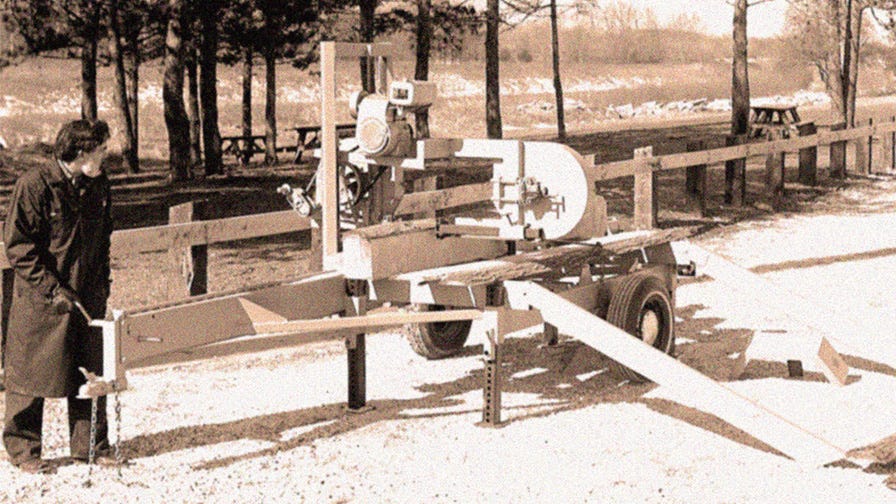

Innovative Wood-Mizer Sawmill Blades
Along with the first Wood-Mizer LT40 sawmill in Poland in the early 1990s, the blades also impacted the sawmilling industry, considering their increased durability, efficiency, and precision of cutting. They were a perfect addition to the lightweight and mobile LT40 sawmill that could be transported for quick timber production. Wood-Mizer blades were made from a thin and narrow steel band, and they were offered in just one profile – similar to the contemporary 10/30 profile, made with a flat gullet parallel to the back of the blade and with a relatively short tooth. Their efficiency excelled the conventional thick blades used in the frame sawmills that were popular at that time. “As soon as we started sawmilling at the customer’s site, the whole neighborhood was coming by just to see how the new LT40 sawmill would handle a massive oak log,” remembers Dariusz Kujawa, a manager of the Customer Service department with a long-time experience. “People disbelieved that the sawmill bed could take the weight of a 90-cm wide log, and the thin blade would cut it along quickly and precisely.”
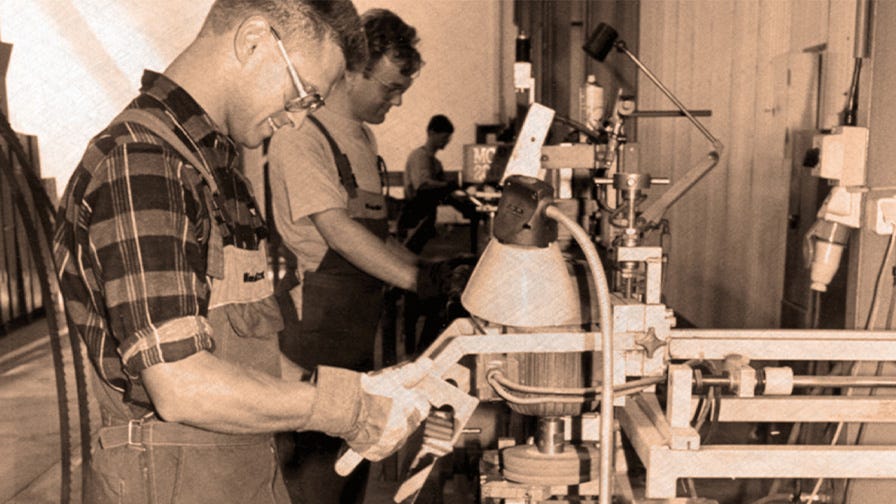

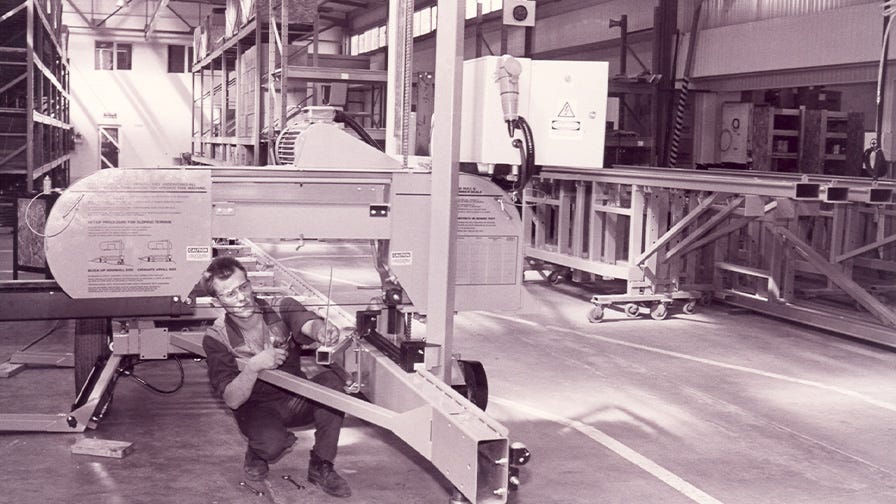

The LT40 sawmill equipped with the narrow band sawmill blades allowed the operator to produce much more timber than the customers had expected. In the old frame sawmills, converting logs into wood was far from precise or efficient – “You fed the log into the machine, and you were lucky to get some timber out, and the rest was a waste,” said Dariusz. Wood-Mizer blades allowed the sawmillers to cut with precision while saving the material. The operator could evaluate the quality of timber after the first cut, turn the log on the other side and cut another slab off. It allowed the operator to immediately control the quality of wood while making good decisions about utilizing a given log in the best way. In addition, the Wood-Mizer LT40 sawmill with narrow blades consumed less gasoline or electrical energy saving the owner’s money and minimizing the pollution of the environment.
Each customer receiving the LT40 sawmill from the factory also received all necessary equipment for blade maintenance and a 2-day training on operating the sawmill and how to sharpen the blade and set its teeth. The first blades available for the LT40 required the user to have a good deal of knowledge and skills to efficiently sawmill various kinds of wood. There was only one profile of blades in the offering, so the operator had to learn how to shape the gullet and set the teeth correctly, according to a particular wood species.
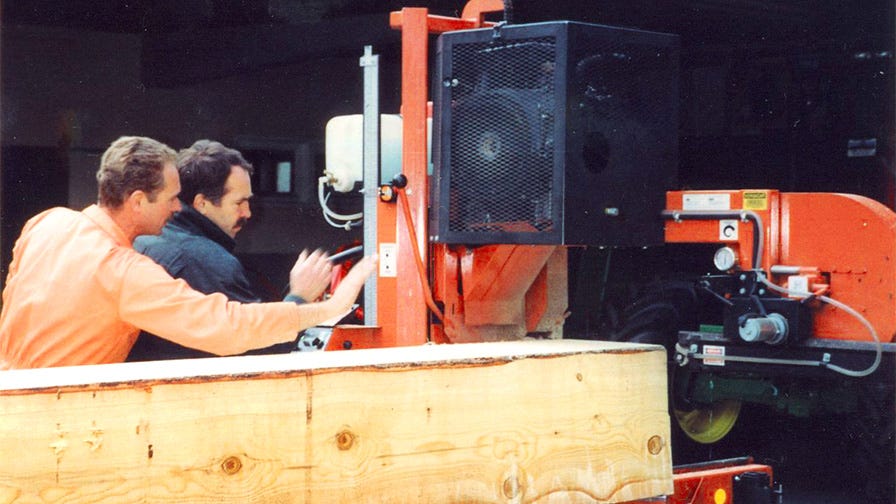

Today the sawmill operators have access to the CBN technology, which incorporates grinding wheels that sharpen just one tooth profile. Using a specific CBN wheel that matches the blade's profile allows the operator to sharpen the blade quickly and avoid any mistakes. Previously, to resharpen the blade, the operator had to shape the conventional grinding wheel in the first place so that it matched the blade's profile. “When the operator wanted to cut poplar, he had to sharpen the blade properly; he made a deeper gullet and a higher tooth. He had to shape the conventional grinding wheel with a special dressing tool. Only then was the grinding wheel ready to profile the gullet and the tooth of the blade. For the oak, the process was opposite, so the blade had to be sharpened with a shallow gullet and a shorter tooth,” explains Robert Fret, an experienced Customer Service worker. “Not many people knew how to do it properly. It was a craft.”
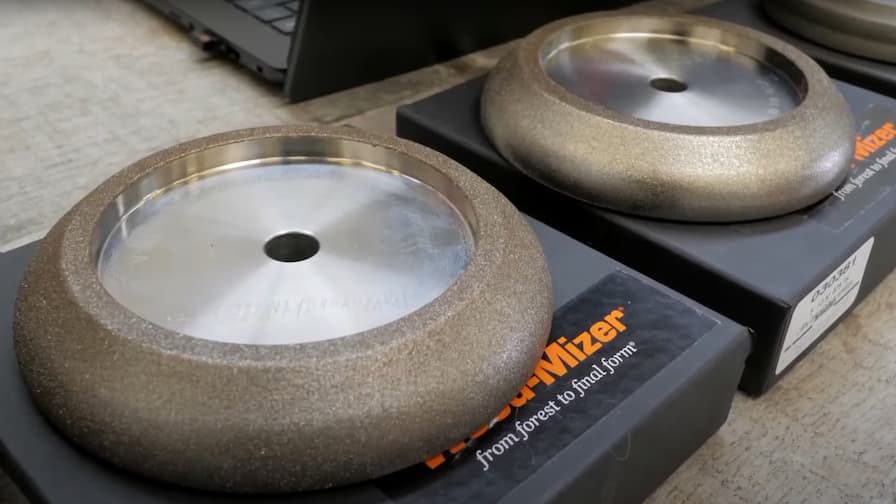

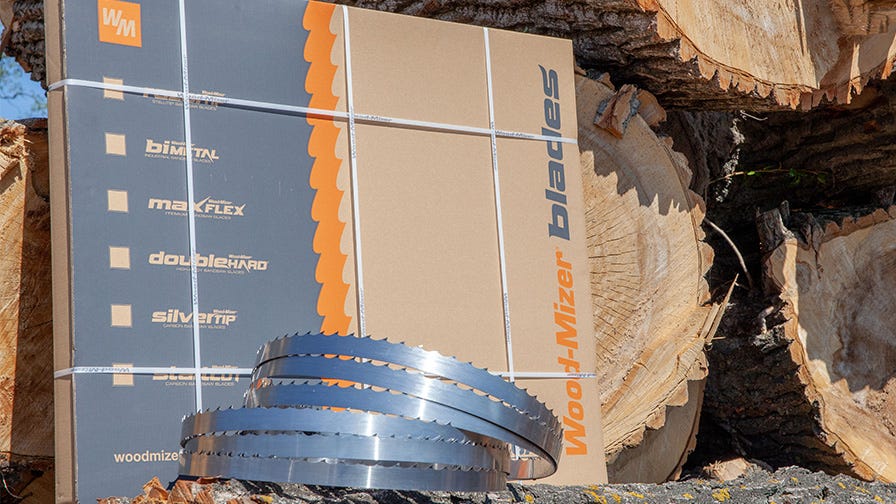

In the following years, as a response to the market requirements and a growing awareness of sawmillers, more and more various sawmill blade profiles were added to the offering. They included profiles developed for cutting specific hardwood, softwood, exotic wood, frozen wood, etc. The famous 10/30 profile (launched in 1996) was also characterized by its deeper gullet and a higher tooth. Around 2000, the offering of blade maintenance equipment was extended by CBN grinding wheels, which allowed the sawmill users to resharpen their blades quickly and efficiently.
The original Wood-Mizer blades production in the factory in Koło started back in the 90s when the steel bands from the USA were punched, welded, and ground to a ready product. With more and more types of blades offered to customers, the decision was made to open a local production facility for sawmill blades. The Wood-Mizer factory in Koło started to punch teeth of the blades (around 2006) while utilizing high-quality material imported from the renowned European steel producers. These days Wood-Mizer supplies the sawmilling industry with a wide range of sawmill blades manufactured from premium steel and with the assistance of high-tech tools. An original Wood-Mizer sawmill blade won’t be delivered to the customer until it passes nearly 100 various quality control tests on the production floor.
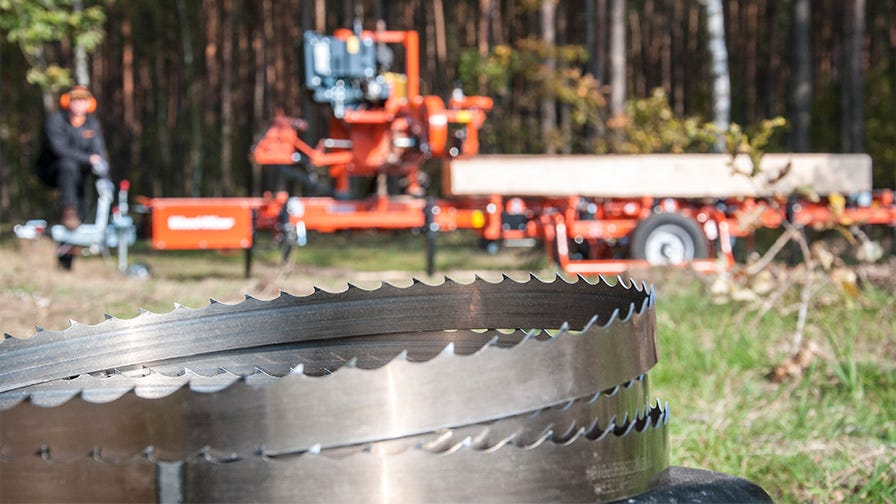

A Highly Efficient Blade Guide
The sawhead of the modern LT40 sawmill has retained many original solutions from the old days, including a single, two-column mast, the characteristic rounded sides of the blade cover, and the original blade guide system. “This system has gone through only several minor upgrades in the years, as it was already accurate with the first LT40 sawmill,” explains Dariusz Kujawa. “Whenever a machine part works well and wins customers’ approval, it shouldn’t be altered. This is the legacy of the LT40 sawmill that we want to preserve.” However, some upgrades had to be introduced to the blade guide system due to the changing safety regulations or the need for better ergonomics.
The blade guide system is a mechanism that consists of a blade guide arm, rollers, tension, and a cleaning system. It can be equipped with a debarker to extend the blade life as an option. The blade guide system is responsible for the stability of a blade cutting through the log.
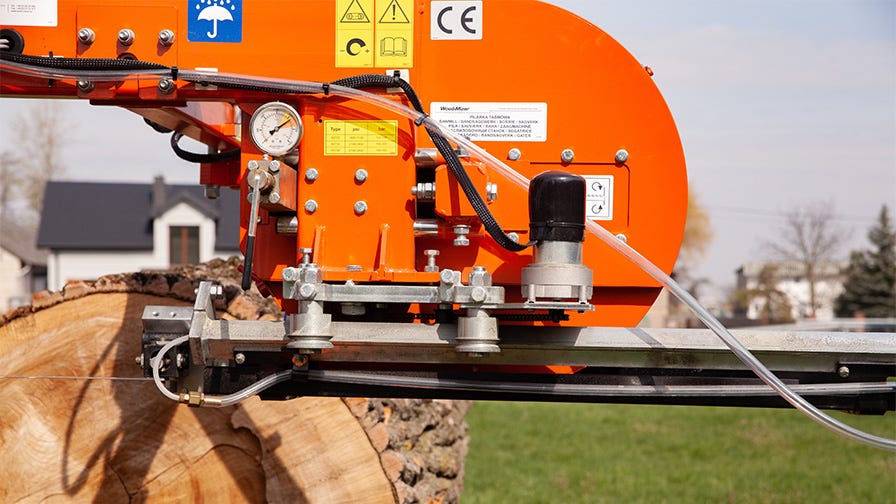

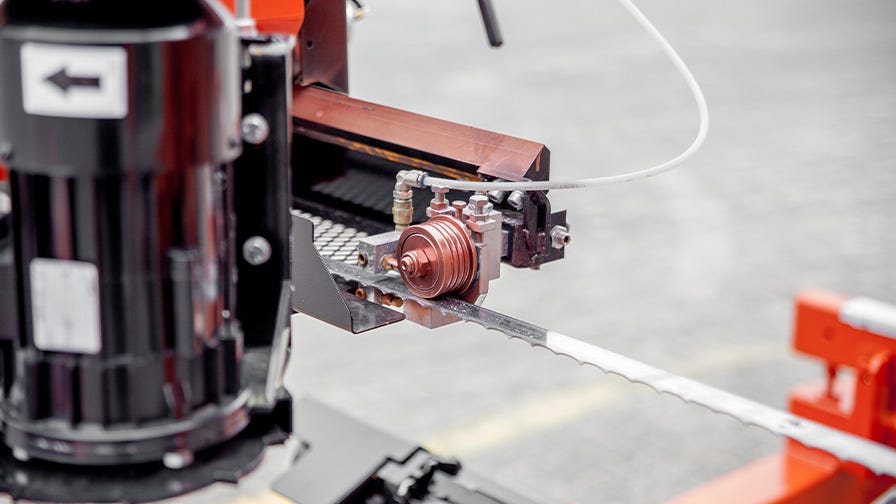

The first LT40 sawmills that came to Poland from the USA were designed with a shorter blade guide arm which had to be modified in the following years due to the Polish certification requirements. However, the system’s main design and adjustment methods remained unchanged for many years. Currently, the LT40 sawmills are equipped with an electrically expanded blade guide arm (12V DC), mounted on four rollers (2 upper rollers with cogs and two bottom passive rollers). With a convenient operation from the central panel, the user can check carefully how much the arm is being extended, adjusting it to the width of the material. The old blade tensioning mechanism relied on springs and bolts and was upgraded to a hydraulic mechanism in 1991. The hydraulic blade tensioning mechanism has still been used in this form; however, a different manometer uses a colorful scale informing the operator about the blade tension values. It’s worth noticing that a properly tensed blade influences the quality of produced material and the blade’s lifetime. The correct blade tension values are indicated on the label placed just beside the manometer or in the LT40 sawmill user’s manual.
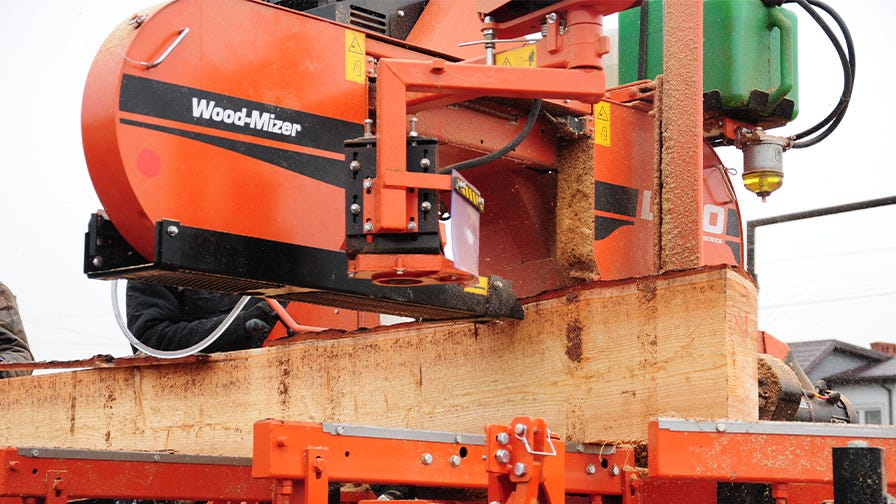

The blade cleaning mechanism in the first LT40 sawmills was simple and used gravity. The water flowed down onto the blade from the container mounted on top of the mast. “In the old days, the role of a tap played a simple mechanism folding the hose and blocking the water flow when the blade feed was switched off. It was a clever solution,” remembers Dariusz Kujawa. Today the LT40 sawmill can be equipped with either a standard electro valve blade cleaning mechanism or an optional LubeMizer mechanism (introduced around 2003). The electric valve turns on the water flow automatically when the blade feed is engaged, which helps to save water. LubeMizer is an efficient mechanism that activates the water flow under pressure through the nozzles placed over and under the blade. LubeMizer can work in two modes – constant and pulsating, cleaning and cooling the blade from one or two sides; particularly useful in milling hardwoods. Generally, the blade cleaning mechanism plays an essential role in cleaning and cooling the blade, reducing friction, and removing organic substances (resin or sap) from the blade's surface.
Read more from the series:
- Revolution on Two Wheels – The Birth of a New Sawmilling Technology
- The LT40 Sawmill History: Sawhead and Control Panel Upgrades
- The LT40 Sawmill History: Blades and Blade Guide System Upgrades
- The LT40 Sawmill History: Engine Upgrades
- The LT40 Sawmill History: Bed and Hydraulics Upgrades
- Wood-Mizer LT40: The Best Sawmill for Your Business
***

